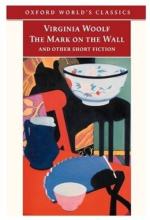|
This section contains 640 words (approx. 3 pages at 300 words per page) |

|
At the time she wrote "The Mark on the Wall," Woolf was quite enthusiastic about the work of James Joyce (if somewhat uncertain about the early chapters she saw of Ulysses), praising him for his ability "to reveal the flickerings of that innermost flame which flashes its messages through the brain." In summarizing her own technique in "The Mark on the Wall," she described those messages as "myriad impressions" which she listed as "trivial, fantastic, evanescent, or engraved with the sharpness of steel." Her efforts to record the flow or stream of consciousness paralleling what Joyce was doing drew on two crucial, revolutionary components of Modernism. One was the work of the Post-Impressionist painters.
The other, which she was much less directly familiar with, was the theoretical work being done in particle physics and quantum mechanics, an aspect of the Zeitgeist that Woolf was aware of.
Roger Fry...
|
This section contains 640 words (approx. 3 pages at 300 words per page) |

|




